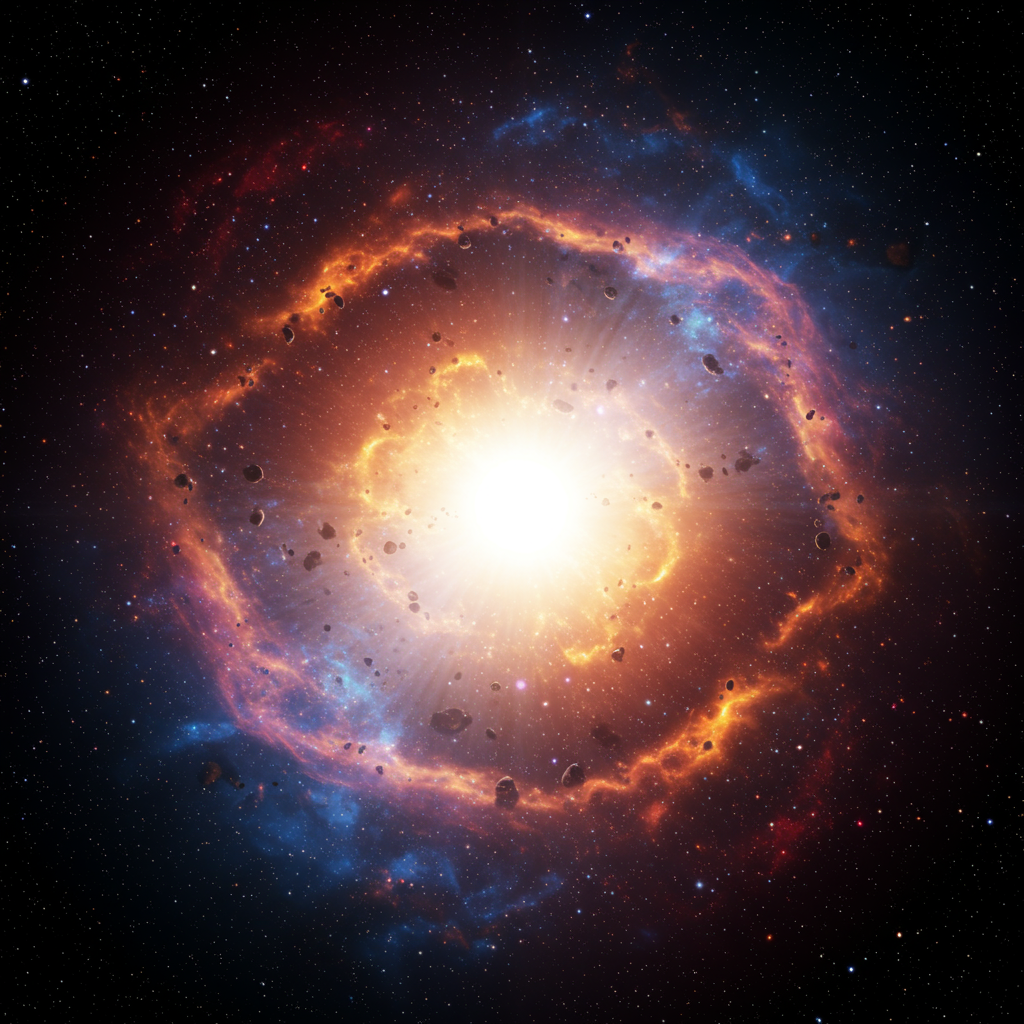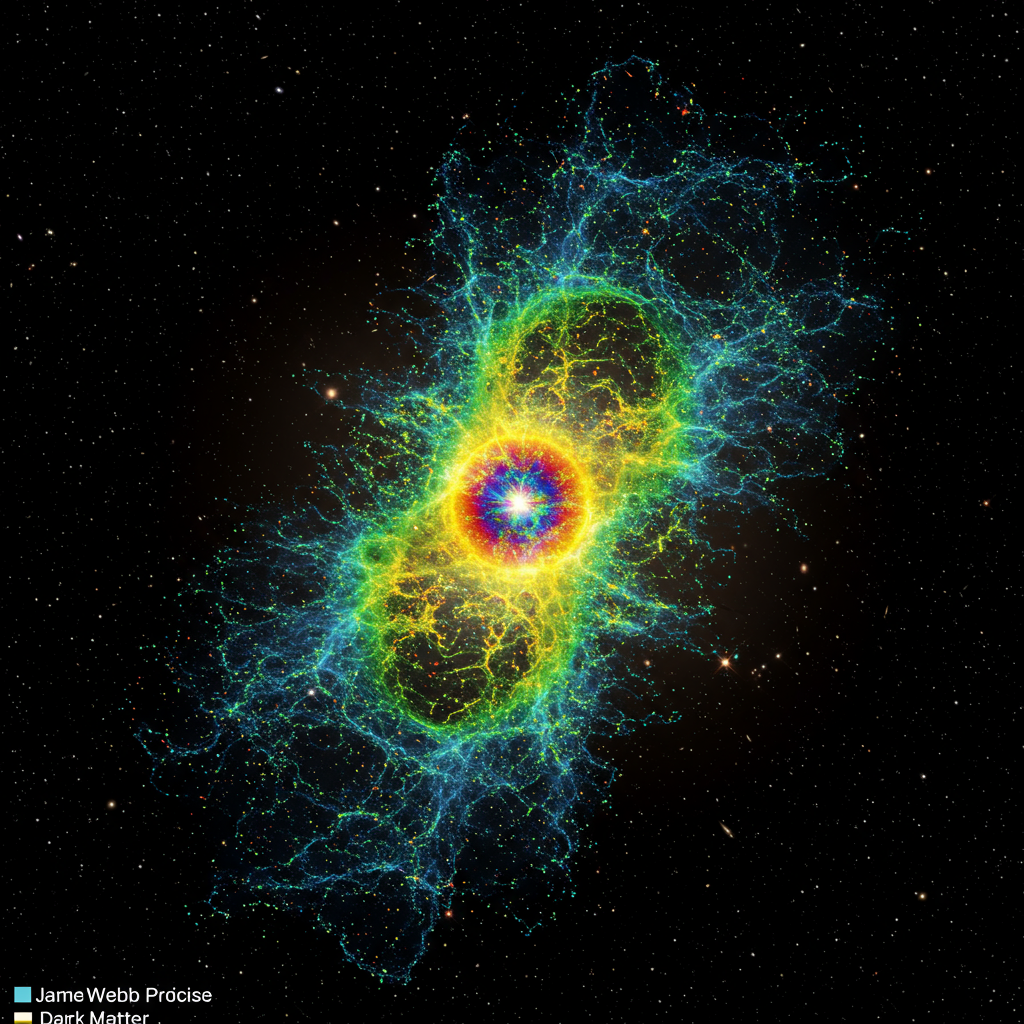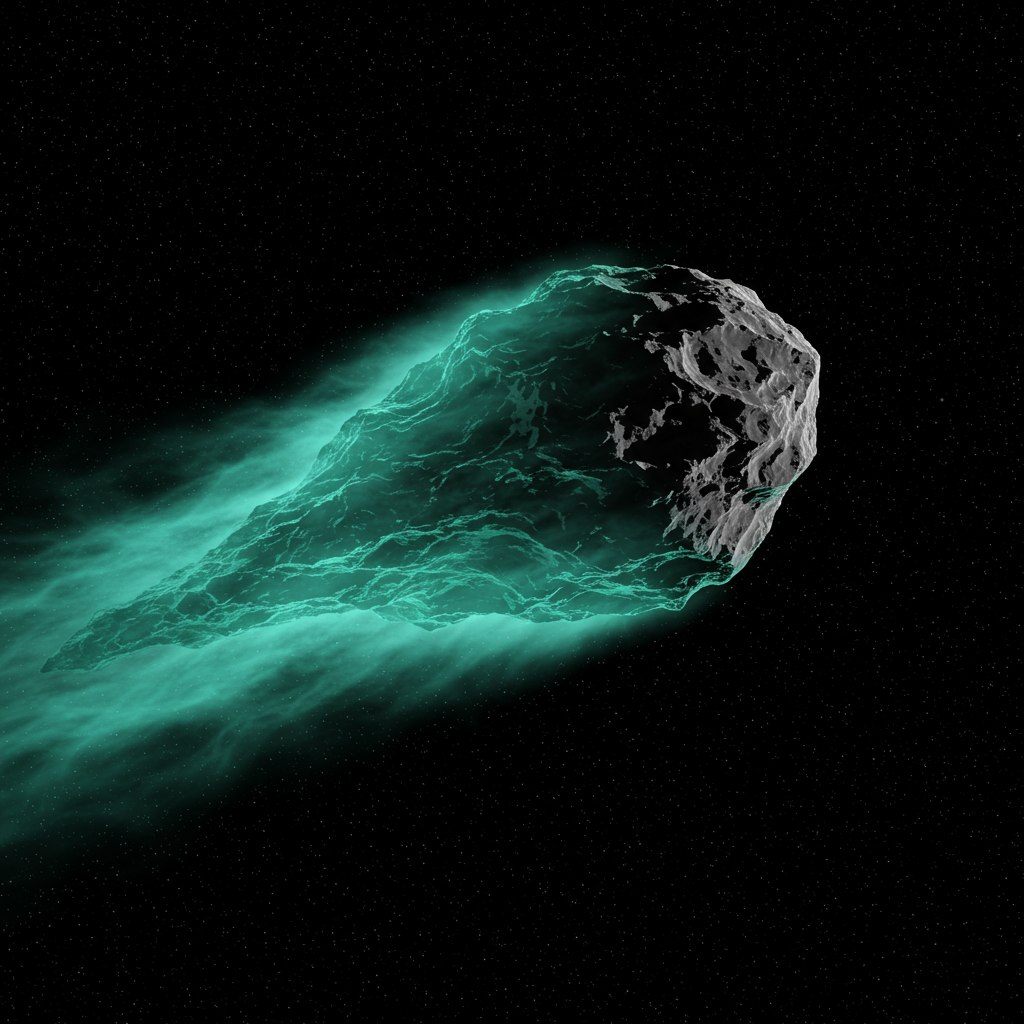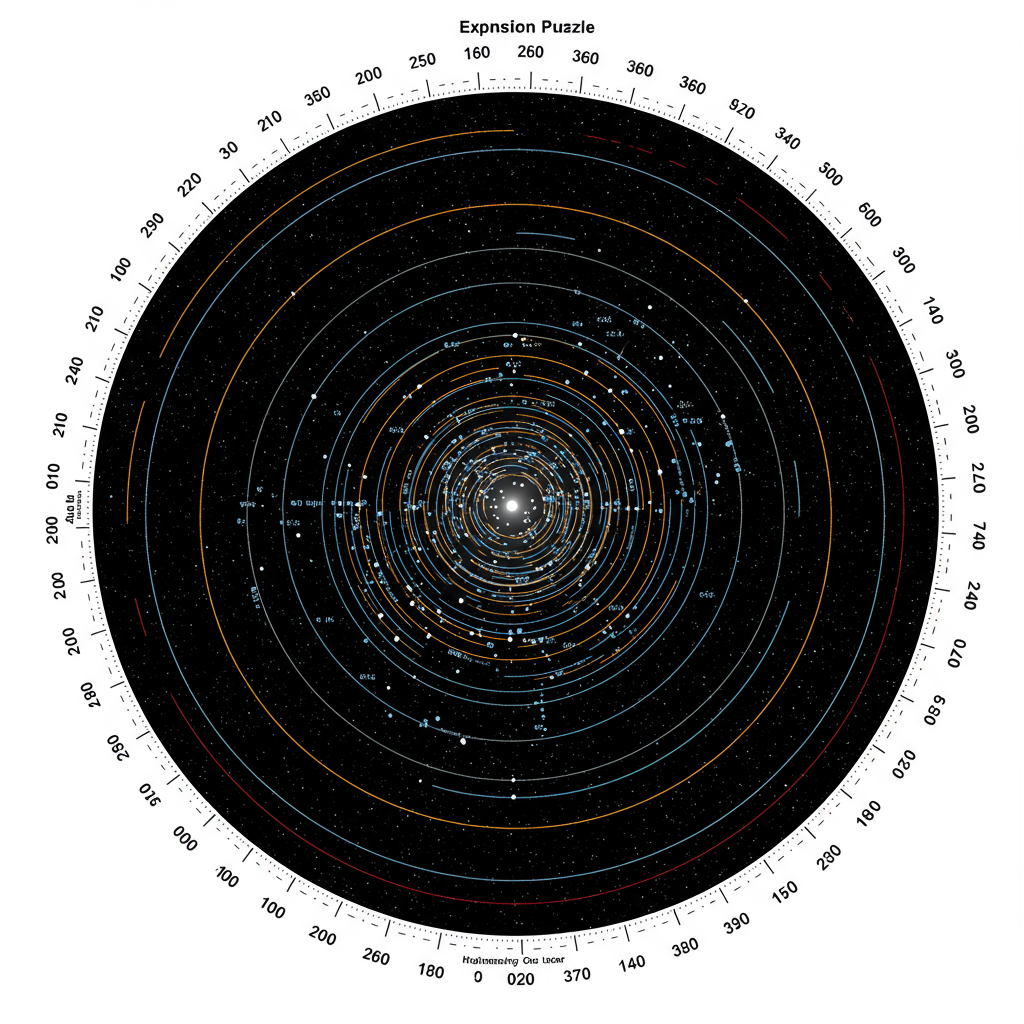Could the universe, long thought to be expanding forever, actually stop and collapse? A fascinating new scientific study suggests this is a real possibility. Researchers predict the cosmos may begin shrinking in billions of years, leading to an eventual catastrophic event known as the “Big Crunch.” This challenging idea offers a potential new look at the ultimate fate of everything.
The study, involving physicists from institutions like Cornell University and Shanghai Jiao Tong University, proposes a universe with a finite lifespan. Instead of limitless expansion, their model suggests the universe will reach a peak size. After this cosmic maximum, the vast reaches of space could start to contract.
This contraction would reverse the process that began with the Big Bang. Everything would eventually rush back together. This ultimate collapse is often referred to as a “Big Crunch.” It’s like hitting rewind on the universe’s history.
Scientists used data from major astronomical surveys for their work. These included information from the Dark energy Survey and the Dark Energy Spectroscopic Instrument (DESI). Based on this data, the study forecasts the “Big Crunch” could happen in about 33.3 billion years from today.
Our universe is currently estimated to be around 13.8 billion years old. This projection means Earth and everything else would have roughly 20 billion years remaining before this potential cosmic implosion begins. It’s a timeline that sparks profound questions about existence.
Unraveling the Role of Dark Energy
The universe’s expansion is driven by a mysterious force called dark energy. This force makes up roughly 70 percent of the known universe. For years, scientists believed dark energy was a constant force, pushing space apart at an ever-increasing rate. This led to the prevailing view of endless, accelerating expansion.
However, the new study presents a different perspective. It suggests that dark energy might not be constant over time. Instead, it could be a dynamic force. A dynamic dark energy could potentially weaken or change its behavior. This change could eventually cause its outward push to lose strength.
Think of the universe expanding like a giant rubber band. The prevailing theory suggests the rubber band just keeps stretching faster and faster. The new model proposes that the rubber band’s internal tension, or a change in its elasticity (representing dynamic dark energy), could eventually become strong enough to overcome the outward pull. This force would then cause the rubber band to snap back.
Recent hints from observational data support the idea of dark energy not being constant. The first year of data from the DESI project, released in 2024, provided some tantalizing clues. These initial results suggest the influence of dark energy might appear to be decreasing over cosmic history. This hints aligns with the concept of dynamic dark energy proposed by the new study.
What a “Big Crunch” Could Look Like
If this dynamic dark energy model is correct, the universe’s expansion wouldn’t last forever. The new study’s model suggests expansion would continue but gradually slow down. It would reach a maximum size, calculated to be about 69 percent larger than its current volume.
After hitting this peak, the universe would begin its slow, inevitable contraction phase. Galaxies would stop moving apart and would instead start rushing towards each other. Over billions of years, everything would be drawn closer together.
This inward pull would grow stronger and stronger. Stars, planets, and galaxies would eventually merge and collide. The density and temperature of the universe would skyrocket. Finally, all matter and energy would collapse into an incredibly dense, hot state – a singularity, akin to the state before the Big Bang, but in reverse. This is the predicted “Big Crunch.”
Data, Predictions, and Uncertainty
This new model is based on interpreting existing astronomical data. Surveys like the Dark Energy Survey and observations from instruments like DESI provide crucial information. They map the distribution of galaxies and measure how quickly the universe is expanding at different points in its history. Scientists use this data to build and test cosmological models.
However, the researchers behind the study are clear about the significant uncertainty involved. Predicting the universe’s distant future is incredibly complex. The exact nature and behavior of dark energy remain one of cosmology’s biggest mysteries. Limited observational data on dark energy’s potential dynamic nature contributes to large margins of error in these long-term forecasts.
Alternative scenarios for the universe’s end are still very much possible. The standard model, which assumes a constant dark energy (known as the cosmological constant or Lambda in the Lambda Cold Dark Matter – LCDM model), still predicts eternal expansion. More data is needed to definitively confirm whether dark energy is static or dynamic.
Fortunately, more data is on the horizon. DESI is set to continue collecting data until 2026. Its upcoming Year 2 and Year 3 results, expected in the coming years, will provide much more statistical power. Additionally, the European Space Agency’s Euclid space telescope, launched in 2023, is specifically designed to probe dark energy and dark matter with unprecedented precision. Data from these missions will be critical in either supporting or ruling out the “Big Crunch” scenario proposed in this study.
The Timeline in Human Context
A potential “Big Crunch” in 33.3 billion years sounds terrifying, but let’s put the 20-billion-year countdown into perspective. It’s a timescale almost impossible for human minds to grasp.
For context, complex life on Earth has only existed for about 600 million years. This is a tiny fraction of the time predicted before the universe might start contracting. Human civilization occupies an even smaller sliver of cosmic history.
Before the “Big Crunch” could even begin, several other monumental cosmic events are expected to occur. Our Sun is predicted to exhaust its fuel and die in about 5 billion years. Our own Milky Way galaxy is also on a collision course with its nearest large neighbor, the Andromeda galaxy. This galactic merger is expected to happen in roughly 4.5 billion years. These events will reshape our cosmic neighborhood long before any universe-wide contraction might start.
Beyond the Crunch: Other Cosmic Fates
It’s important to remember that the “Big Crunch” is just one theoretical end for the universe. Based on our current understanding of physics and dark energy, other possibilities exist. Scientists actively explore different scenarios for how the cosmos might conclude.
One scenario is the “Big Freeze,” also known as Heat Death. This aligns with the standard model of eternal expansion driven by a constant dark energy. In this future, the universe continues expanding forever, spreading matter and energy thinner and thinner. Stars eventually die out, no new ones form, black holes evaporate, and the universe becomes a cold, dark, empty void where energy is evenly dispersed, making any process impossible.
Another dramatic possibility is the “Big Rip.” If dark energy were to become stronger or change its nature in a specific way, the accelerated expansion could become so powerful that it tears apart not just galaxies, but eventually stars, planets, and even atoms themselves. Space itself would rip everything apart.
Some theories also explore cyclical universes, where a “Big Crunch” could potentially lead to a “Big Bounce.” In this speculative model, instead of ending in a singularity, the collapsing universe might somehow rebound, triggering a new phase of expansion – a new Big Bang. This concept, while facing theoretical challenges, reflects an ancient philosophical idea of cosmic cycles.
Most recently, some physicists have even proposed a catastrophic end triggered by the Higgs boson field. This theory suggests the universe could collapse internally if the Higgs field, which gives particles mass, becomes unstable. This could potentially be triggered by extreme conditions like the curvature of space-time around massive black holes. If this collapse were to start, it could theoretically happen instantly across the universe, destroying everything.
Frequently Asked Questions
What is the “Big Crunch” and how is it different from the Big Bang?
The Big Bang is the widely accepted theory for the beginning of our universe, where everything rapidly expanded from an incredibly hot, dense state (a singularity) about 13.8 billion years ago. The “Big Crunch” is a theoretical end to the universe proposed by some models. It suggests that if the universe stops expanding and begins to contract, all matter and energy would eventually collapse back into a state similar to the Big Bang singularity, essentially a reverse process.
How does dark energy influence the universe’s future predictions?
Dark energy is the mysterious force currently causing the universe’s accelerated expansion. Its behavior is key to predicting the universe’s ultimate fate. If dark energy is a constant force, models predict eternal, accelerating expansion (leading to a Big Freeze or possibly Big Rip). However, if, as suggested by the new study and hints from DESI data, dark energy is dynamic and weakens over time, its influence could decrease, gravity could eventually dominate, leading to a contraction and a “Big Crunch.”
How certain are scientists about the universe ending in a Big Crunch?
Scientists are currently not highly certain that the universe will end in a Big Crunch. The prediction is based on a new model suggesting dark energy might be dynamic rather than constant, a concept supported by intriguing hints from recent data like DESI’s first year results. However, this is a significant departure from the standard cosmological model. The researchers acknowledge large margins of error due to limited data on dark energy’s precise nature. More definitive data from upcoming missions like DESI and Euclid is needed to confirm or rule out this specific scenario, leaving eternal expansion and other outcomes still as strong possibilities.
Conclusion
The idea that the universe might one day stop expanding and eventually contract into a “Big Crunch” is a dramatic scientific prediction. It challenges the long-held view of eternal cosmic growth. This new study, rooted in analyses of astronomical data and a re-evaluation of dark energy’s potential behavior, offers a glimpse into one possible ultimate fate for the cosmos.
While the timescale is immense – billions of years before any potential contraction would begin – the concept highlights how much we still have to learn about the fundamental forces shaping our reality, particularly dark energy. It’s a reminder that our understanding of the universe’s past, present, and future is constantly evolving. Future astronomical missions hold the key to providing clearer answers about whether a Big Crunch is truly in our universe’s distant future or if other cosmic destinies, like eternal expansion leading to a Big Freeze, await.




